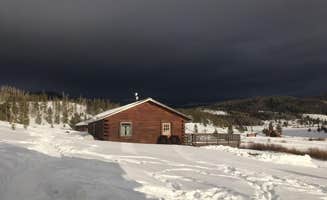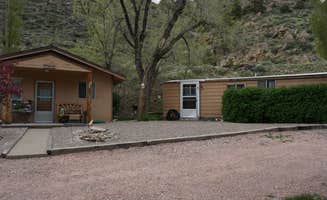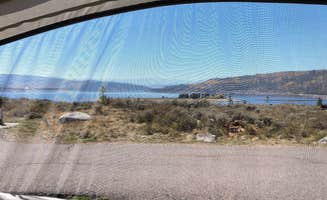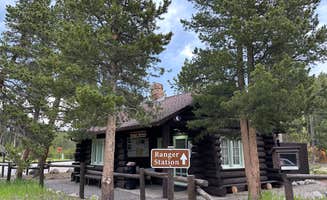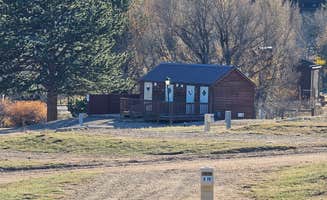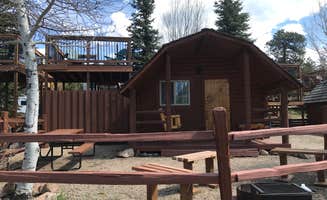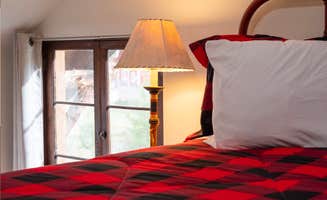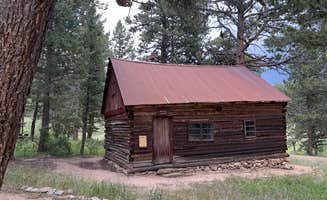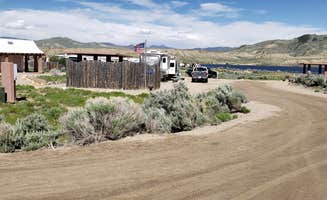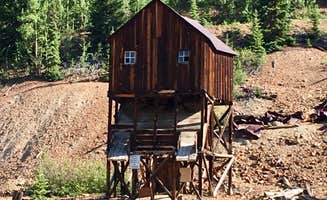State Forest State Park offers primitive campsites, cabins, yurts, and dispersed camping options across 71,000 acres of rugged Rocky Mountain terrain at elevations around 9,000 feet. Situated in North Park Valley, the park experiences significant temperature fluctuations, with summer daytime temperatures reaching the 80s but dropping to near freezing at night. Winter brings heavy snowfall and cold temperatures, making the park accessible primarily by snowmobile, cross-country skis, or snowshoes from November through May.
What to do
Wildlife viewing after dusk: Moose sightings are common at The Crags Campground, especially during evening hours. "Your neighbors will be moose at this campground. It is remote and the sites are near, but I still found it peaceful. Noobs will fall prey to the moose. Seriously, many meals were stolen," notes Joshua D. at The Crags Campground.
Fish in crystal-clear waters: Trout fishing is excellent at Ranger Lakes, where the clear waters make spotting fish easier. "BEAUTIFUL clear waters, PLENTY of trout, and great trails through the woods to explore," reports Gary E. about his experience at Ranger Lakes Campground.
Winter sledding and snowshoeing: Cabin accommodations remain open year-round, making winter recreation accessible. "We spent a lot of time sledding and snowshoeing and we were basically the only ones out there," shares Hayley K. about her winter cabin stay at North Michigan Campground.
What campers like
Secluded tent sites: The primitive camping areas provide more privacy than the established campgrounds. "Site 410 has a stream behind it and was a beautiful spot. I would also recommend sites 411-414 & 421 for the primitive camper," suggests Tarrah C. about North Park Campground.
On-site paddling access: North Michigan Campground offers direct water access for paddling. "We were able to paddle board and fish right from our campsite, and had a wonderful fresh trout dinner," reports B B. at North Michigan Campground.
High altitude lakes: Multiple alpine lakes are accessible via moderate hiking trails. "The hiking is just beautiful and there are several lakes (2 are only accessible by hiking in)," notes Tarrah C., highlighting the park's less-visited water features.
What you should know
Fire restrictions vary seasonally: Fire bans are common during summer months. "At the time we visited there was a Stage 2 fire ban in place, so we couldn't have a campfire. The fire ban included the burning of wood and charcoal - using a propane stove was OK," explains Amanda M.
Extreme weather fluctuations: Even summer campers should prepare for potential snow. "Word to the wise - we were there in late June and we saw about 6 inches of snow overnight. It was cold!" warns Sarah F. about her experience at Winding River Resort.
Limited phone service: Cell coverage is virtually nonexistent throughout the park. "No cell service but there are call boxes in the area and we often see rangers driving by," reports Darla R. about dispersed camping areas.
Limited amenities access: The nearest significant supplies are 30+ miles away. "The State Park is a haul to get to. There are no real towns of any significance nearby. Be prepared to come into this park and stay here for the weekend!" advises Sarah F.
Tips for camping with families
Book yurts for winter comfort: Yurts provide a comfortable base for families with small children during colder months. "We stayed in cabin #3 and it was an awesome experience! We had room enough for 4 people and 3 dogs and didn't feel like we were on top of each other. The gas stove kept us nice and toasty all night long!" shares Hayley K.
Choose lakeside sites for easy entertainment: Sites near water provide natural play spaces. "My 4 year olds threw rocks in the reservoir, they bikes on nearby trails. The bathrooms were clean too. My dog was able to cool off in the reservoir on a hike," reports Meghan H. at North Michigan Campground.
Pack extra layers year-round: The high elevation means cold nights even in summer. "It does get cold at night even in summer as it's about 9,000 ft above sea level," notes Darla R. about dispersed camping areas in the park.
Tips from RVers
Fill water tanks at maintenance center: Potable water access varies across campgrounds. "If you have an RV make sure to fill your tank at the maintenance center 6 miles up the road," advises Sarah S. about Stillwater Campground.
Expect exposure and wind: Most RV sites lack substantial tree cover. "The sites are wide open with little privacy, there are flush toilets and access to the lake. We stayed in a first come first serve RV site with power and water during early season snow with high winds," reports Ashley M. about Stillwater Campground.
Check road conditions during shoulder seasons: Freezing temperatures can affect facilities. "There is a dump station but it was closed due to freezing temps when we left," notes Ashley M. about October camping conditions at Stillwater Campground.


